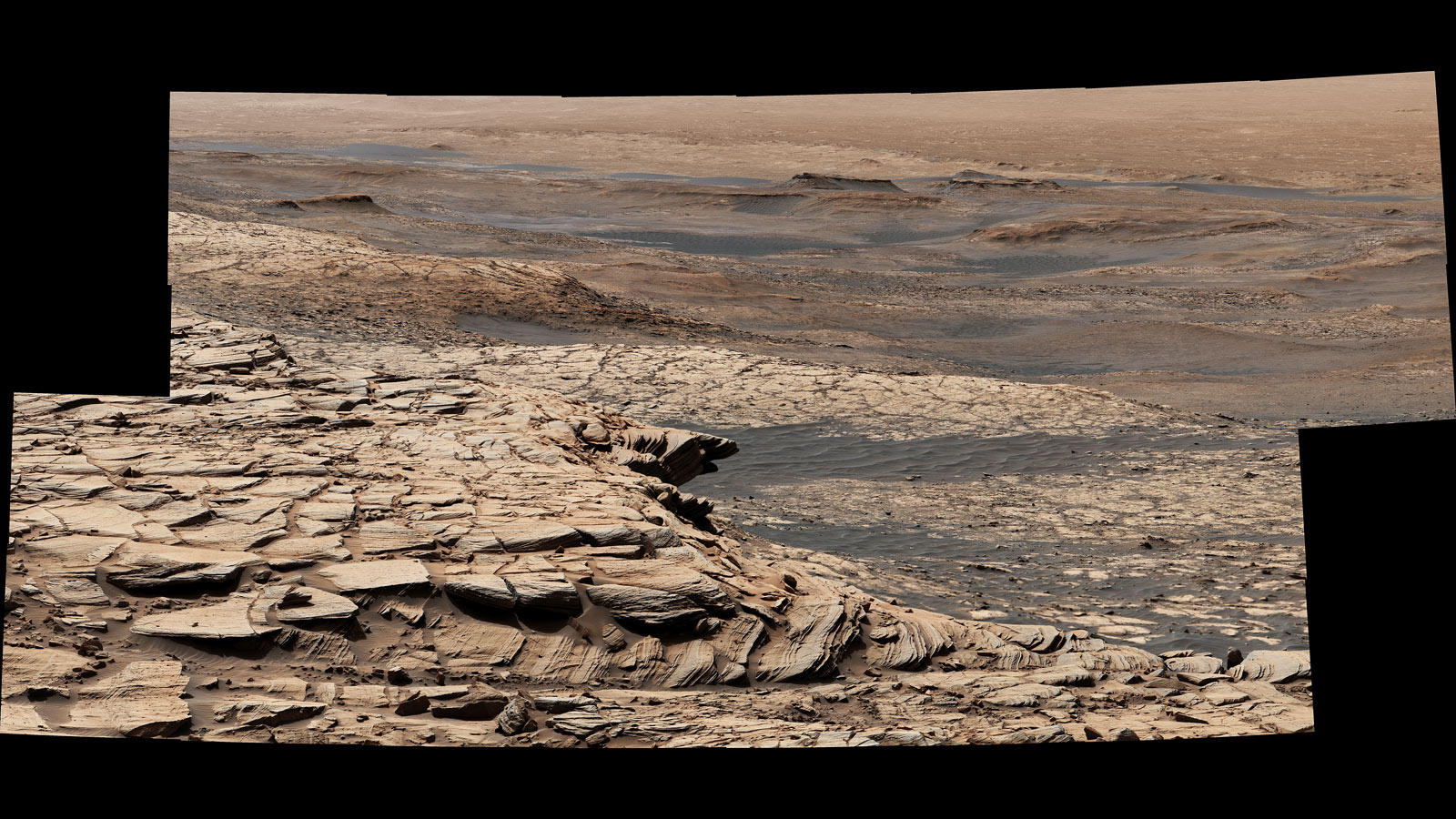Megafloods on Ancient Mars
Surface water or even rain clouds are sought in vain on Mars today. In the early days of the planet, however, things looked different. Four billion years ago, a kind of megaflood could have swept over the Red Planet, as a joint project of scientists from Jackson State University, Cornell, the Jet Propulsion Laboratory and the University of Hawaii shows. It is based on data collected by NASA’s Curiosity Rover, which investigated the Gale Crater on Mars.
In the paper, published in Scientific Reports, the researchers describe how a megaflood – probably triggered by the heat of a meteorite impact that released carbon dioxide ice stored on the Martian surface – caused gigantic waves, revealing geological structures familiar to scientists on Earth. “We identified the megafloods for the first time using detailed sedimentological data,” says co-author Alberto G. Fairén, an astrobiologist. “Deposits left behind by megaflods had not previously been identified with orbiter data”.
As on Earth, geological features, including the action of water and wind, have been frozen in time for about 4 billion years on Mars. These features mediate processes that have shaped the surface of both planets in the past. This includes the presence of huge undulating features in the sedimentary layers of the Gale crater, often referred to as “megaripples” or anti-dunes, which are about 10 meters high and about 150 meters apart, according to lead author Ezat Heydari, professor of physics at Jackson State University.
The most likely cause of the flooding of Mars was the melting of the ice due to the heat generated by a large impact, which released carbon dioxide and methane from the planet’s frozen reservoirs. The water vapor and the release of gases together led to a short period of warm and humid conditions on the red planet. Condensation formed clouds of water vapor, which in turn produced torrential rainfall, possibly over the entire planet. This water also penetrated into the Gale crater and then combined with water coming down from Mount Sharp (inside the Gale crater) to create gigantic flash floods.
The Curiosity rover science team has already determined that there were lakes and rivers in the Gale crater in the past. These long-lived waters are good indicators that the crater and Mount Sharp inside were able to support microbial life. “From a geological point of view, early Mars was an extremely active planet,” says Fairén. “The planet had the necessary conditions to support the presence of liquid water on its surface – and on Earth, where there is water, there is life. So Mars was a habitable planet back then. But was it also inhabited? This is a question that the next rover Perseverance will help answer.”
